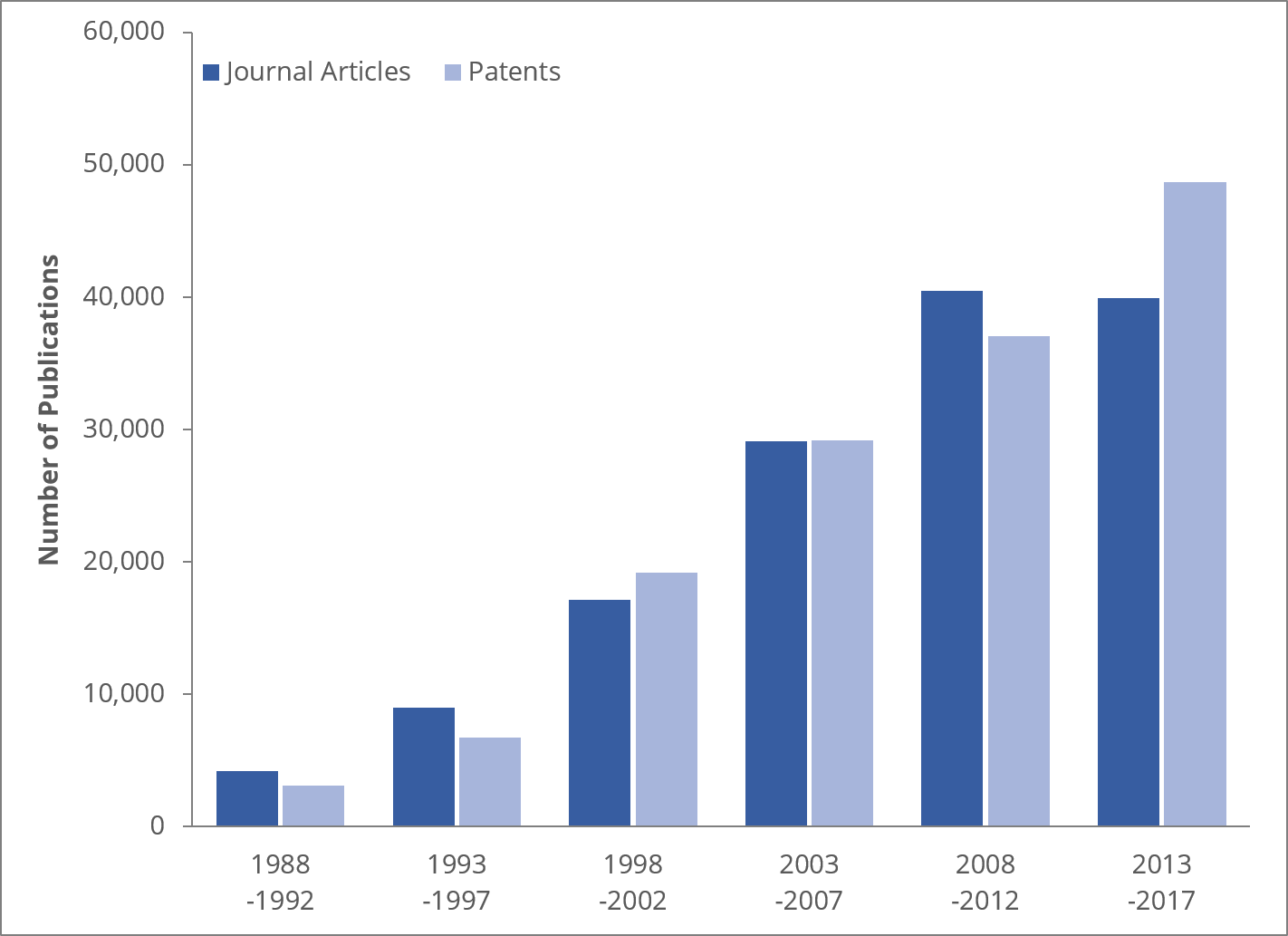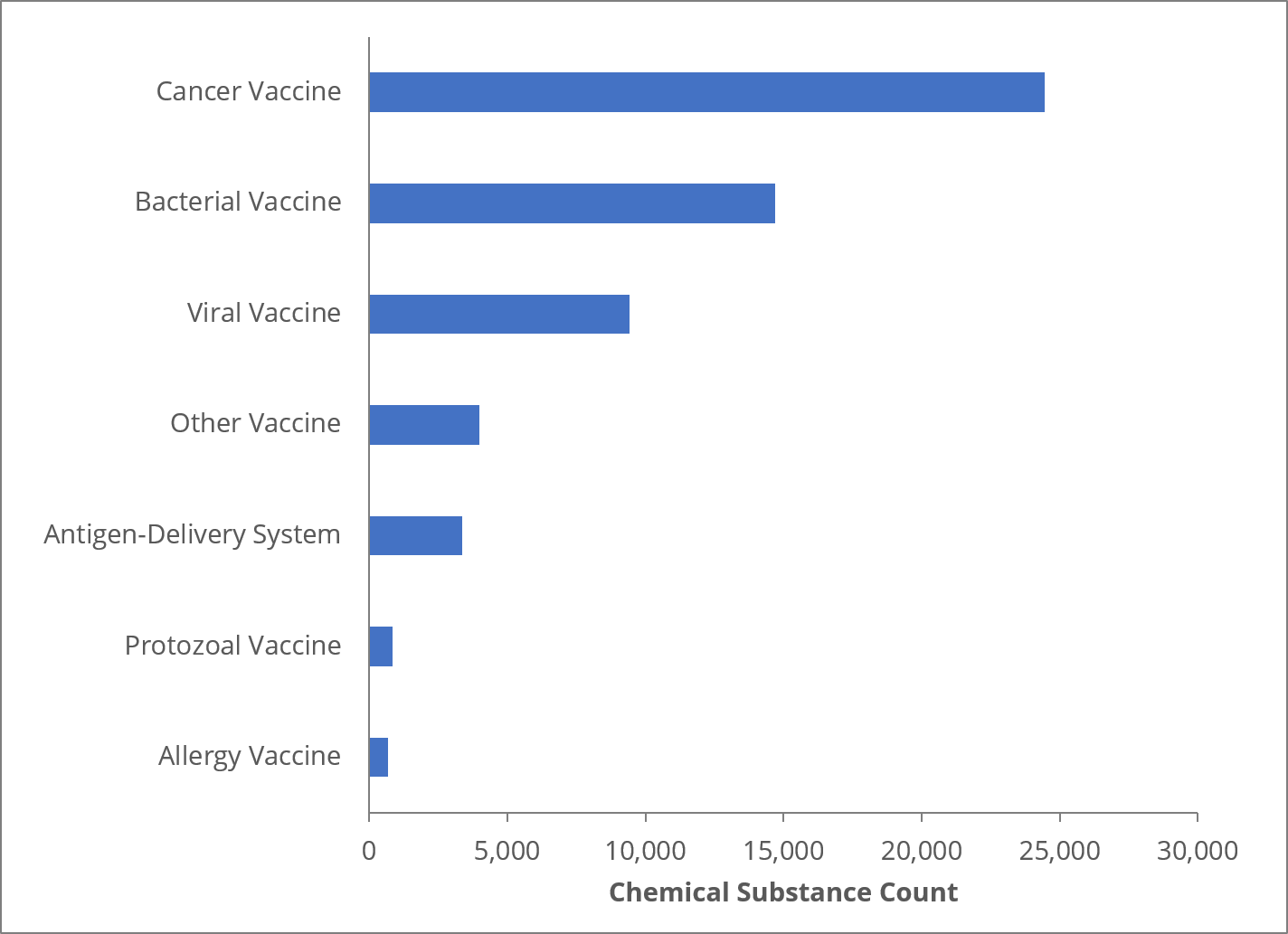Vaccines save millions of lives each year. By providing large-scale protection against serious diseases, vaccination programs proved to be one of the greatest public health achievements of the 20th century. Thanks to the advent of recombinant DNA technology and advanced multivalent vaccines, coupled with ground-breaking cancer vaccines, the scope of innovation in this field continues to expand.
According to the World Health Organization, the global vaccination rate is approximately 85%. Given the huge and growing clinical impact of vaccines, the global market is becoming ever more lucrative. A recent report from Evaluate Pharma revealed that global vaccine sales in 2017 reached $27.7 billion, which is expected to rise to an incredible $44.6 billion by 2024. Much of this predicted dramatic growth is likely to result from new innovations. For example, a summary from Research and Markets predicts that the cancer vaccine market opportunity could exceed $15 billion by 2025.
According to Yingzhu Li, Ph.D., CAS Information Scientist and a contributing author of this blog post, this growing field presents a host of valuable investment opportunities. However, with the market expanding rapidly and the R&D landscape evolving fast, it can be a challenge to determine where to allocate your resources to maximize the impact of your research. To make the best investment decisions, you'll need a clear picture of the current market trends.
CAS collaborated with the National Science Library, Chinese Academy of Sciences to produce a whitepaper giving a detailed overview of this intricate landscape. This blog post includes some of the major highlights and explains how to use insights to capitalize on the enormous potential of this growing field.
How is the global vaccine market evolving?
Looking at the global market in vaccines, there is rapid growth in R&D over the last three decades. The number of substances related to vaccines registered by CAS has increased steadily, and the volume of vaccine-related journal articles and patent applications has shown similar growth, with over 150,000 journal articles and 148,000 patent applications published by the end of 2017.

With such a robust increase in research output across the globe, the vaccine market shows great commercial promise. Looking in depth at the global market will help to identify and capitalize on business opportunities. For example, examining how trends in research output vary between countries can help identify hotspots of innovation, predict promising areas to enter the market, and highlight how to find potential collaborators to help advance research.
The global picture of vaccine R&D shows that most of the major organizations generating vaccine-related journal articles and patents are based in the United States, with other key international players including China, France, the United Kingdom, Japan and Germany.
What are the most promising areas of vaccine innovation?
Examining the balance of R&D activity between different market sectors can point toward promising areas of innovation, helping identify new investment opportunities. What are the biggest sectors in the global vaccine market? Interestingly, cancer vaccines are a relatively new therapeutic approach, but are now the largest class of vaccines in terms of substance counts, with nearly half of CAS-registered vaccine-related substances now falling into this category.

This remarkable surge of interest in cancer vaccines has gained momentum since the FDA’s approval of the first cancer vaccine, Sipuleucel-T (Provenge), which was licensed to treat prostate cancer in 2010. Since then, there has been a wave of activity in cancer vaccine R&D, reflecting the prevalence of cancer and the growing commercial potential of this sector. To pinpoint the most promising avenues to investigate, we need to delve a little deeper into identifying which areas of the cancer vaccine field attract particular research attention.
The data reveals that 30% of cancer vaccine patents (covering 9,000 substances) refer to tumor-associated antigens expressed by multiple cancers, and a further 30% of patents (covering 5,900 substances) focus on systems for enhancing antigen delivery or presentation. Other areas of significant R&D interest include HPV-induced cancer, melanoma, breast cancer, prostate cancer and colon cancer. These highly studied areas are likely worth evaluating for investment opportunities.
How is the vaccine market likely to develop in the future?
Given the proven clinical impact to date, vaccines will continue to play a vital role in the control of infectious diseases. In particular, vaccines will be critical in combating diseases such as HIV and Ebola and in controlling the resurgence of diseases such as mumps, measles and pertussis.
As vaccine research advances, therapeutic horizons will broaden even further across the field of non-infectious diseases. Alongside ongoing progress in cancer vaccinations, we’re likely to see innovative applications of vaccines in many other disease categories, such as atherosclerosis and Alzheimer’s disease. Predicting these new developments can be challenging, but a thorough awareness of the landscape allows you to identify these opportunities as they arise.
In terms of vaccine technology, it is likely there will be increasing interest in recombinant vaccines, engineered vectors, defined adjuvants and antigen delivery and presentation technologies. It’s also anticipated that significant R&D focus will be on multivalent and polyvalent vaccines, which can protect against different strains or types of pathogens. Technological innovations will also influence the pace of these new developments, so it’s important to keep up with the latest advances in adjacent fields, such as drug delivery and formulations that can significantly influence vaccine innovation.
Capitalizing on the promise of vaccines
Given the ever-widening clinical scope of vaccines, there’s great promise in this area. However, it’s crucial to closely monitor the developments in this complex market and related technologies to identify the best places to focus resources. Our recently published whitepaper provides additional R&D insights on the vast potential of this field. Read the full report to gain access to this valuable information. You can also download our other whitepapers on therapeutic antibodies, fusion proteins and gene and cell therapies, as well as our overview report on biologics.
Keeping up to date on the latest developments in rapidly evolving fields can be a challenge. Partner with CAS to stay ahead so you can confidently set strategy for research and commercial objectives.


